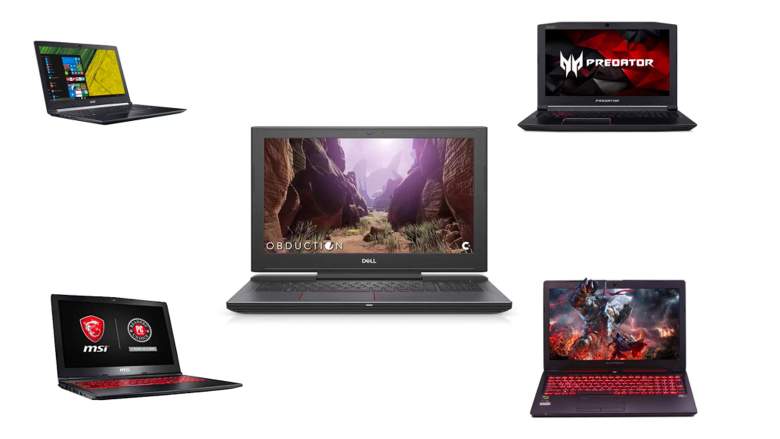
Looking for the best budget gaming laptops? We’ve found all the best deals and offers online to help make picking out the right laptop that much less of a headache.
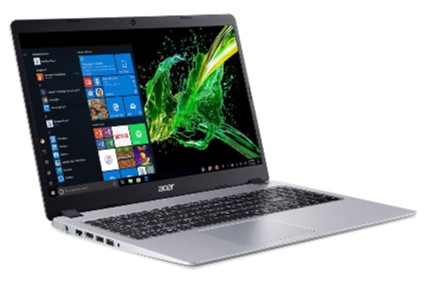
|
Amazon Customer Reviews
|
Price: $358.00 Shop at Amazon | Shop now Read our review |
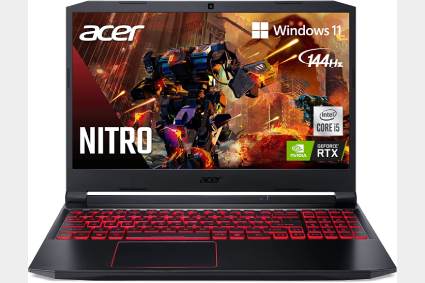
|
Amazon Customer Reviews
|
Price: $688.00 Shop at Amazon | Shop now Read our review |
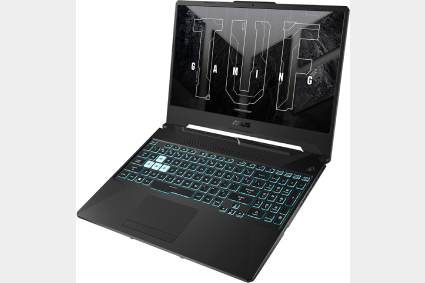
|
Amazon Customer Reviews
|
Price: $749.99 Shop at Amazon | Shop now Read our review |

|
Amazon Customer Reviews
|
Price: $599.99 Shop at Amazon | Shop now Read our review |
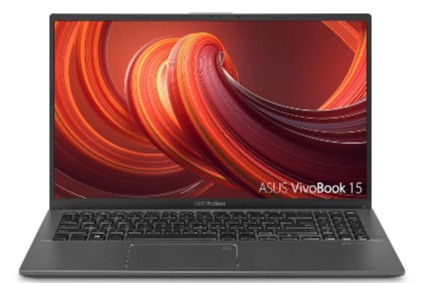
|
Amazon Customer Reviews
|
Price: $439.00 Shop at Amazon | Shop now Read our review |
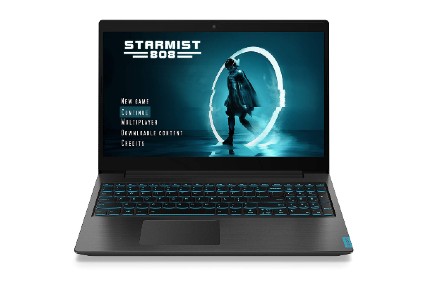
|
Amazon Customer Reviews
|
Price: $644.00 Shop at Amazon | Shop now Read our review |
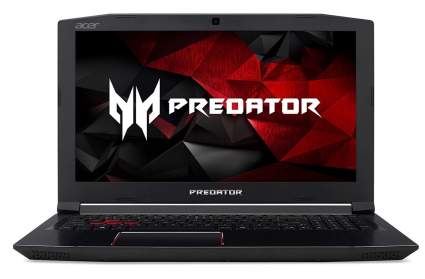
|
Amazon Customer Reviews
|
Price: $1,380.00 Shop at Amazon | Shop now Read our review |
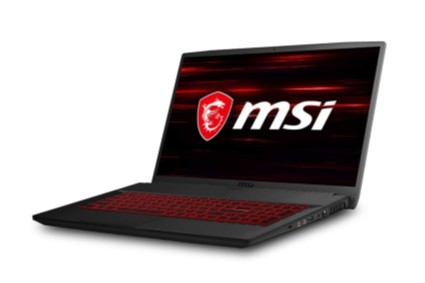
|
Amazon Customer Reviews
|
Price: $1,249.99 Shop at Amazon | Shop now Read our review |
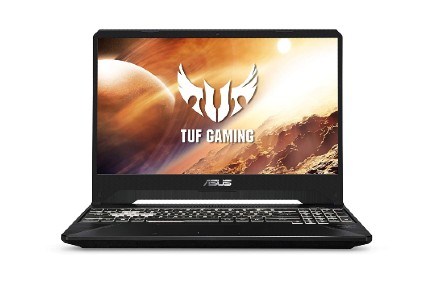
|
Amazon Customer Reviews
|
Price: $777.00 Shop at Amazon | Shop now Read our review |
-
1. Acer Aspire 5 Slim Laptop
Pros:- Mega affordable
- Does exactly what it claims to
- Again, that price is sure to turn heads
Cons:- Not powerful enough to run games on medium or high
- SSD storage space is small
- The trade-off for the lower price is a hit to power
Can you say ‘compromise’? That’s what the Acer Aspire 5 is all about. The trade-off for the much, much lower price is a hit to power.
The AMD Ryzen 3 3200U processor is fine. It’s not anywhere near the most powerful chipset on the market, but it’ll do at this price point. That said, the 128GB SSD is going to help with load times and general speed.
Let’s not forget, though, 128GB is not much space at all in the modern gaming landscape. We’re talking around three AAA-quality games (or one Call of Duty and 28GB spare). The amount is manageable, but the lack of space is something that’s worth factoring in.
So, let’s talk games. With 4GB of RAM married to the above specs, you aren’t going to be able to game at medium or high settings, obviously, but some games will run on low. I’ve seen Fortnite run on an Acer Aspire 5, and while it’s clear it’s on low, it works and is very playable. For indie games, you shouldn’t have too many problems, especially if we’re talking 8-bit or 16-bit style games. The only major issue is when you try to run the more modern, high-tech games.
Does all that make the Acer Aspire 5 worth avoiding? Not at all. It’s a cheap gaming laptop that trades off power in exchange for a crazy low price. So long as you’re aware of the limitations of this machine prior to purchase, you’ll have a good time. Not everyone wants to pay silly prices for gaming laptops, so if you’re after something affordable, the Acer Aspire 5 is well worth considering.
-
2. Acer Nitro 5
Pros:- The RTX 3050 will play most modern games
- Stunning 15.6-inch full HD screen at 144Hz
- Stylish backlit keyboard
- Solid-state drive helps to keep things fast
- Great price for the specs
Cons:- The i5 is perfect for the price, but i7 is prefferable
- SSD could be larger - 512GB would be perfect
- Backlit keyboard isn't for everyone
The Acer Nitro 5 packs in a solid amount of power at a considerably low price tag.
So, what do we have here? On the visual side of things, we’ve got the NVIDIA GeForce RTX 3050, which is the perfect choice if you’re looking to keep costs down. It’s not the most powerful graphics card out there, but in terms of compatibility, this thing rocks. You’ll be able to play most modern games on low to mid, while older games should be able to reach high settings.
Backing up the RTX 3050 is the Intel Core i5-10300H, 8GB of DDR4 RAM, and a 256GB NVMe solid-state drive. The short version is all of the previously mentioned elements will make this laptop fly. Some purists turn their nose up at the i5 processor, but it’s more than enough for what you need. Plus speed is helped by the solid-state drive, so it’ll feel faster than it is.
If that’s not enough, you’ve also got a lush 15.6-inch full HD screen at 144Hz. The vast majority of games run at either 30, 60, or 120 frames per second, so the 144Hz will be able to accommodate all those options.
Oh, and in the style departments, the backlit keyboard really makes this beast feel like a gaming laptop.
-
3. ASUS TUF Gaming F15
Pros:- A solid amount of solid-state storage
- Excellent 15.6-inch full HD screen at 144Hz
- Solid processor choice for the price
- Backlit keyboard is stylish
Cons:- The NVIDIA GeForce GTX 1650 is fine for a mid-range machine - RTX 3050 is better
- The i5 is enough, but i7 is prefferable
- Could be a little more affordable
Another solid option if you’re looking to keep costs down is the ASUS TUF Gaming F15.
In terms of power, the NVIDIA GeForce GTX 1650 is a decent option if you’re okay with a mid-range machine. It won’t match the RTX 3050 seen in the Acer Nitro 5, but then this system is more affordable, so the trade-off makes sense.
Elsewhere we’ve got the Intel Core i5-10300H – another solid choice for a budget laptop – along with 8GB of DDR4 RAM. As for storage, it’s a 512GB PCIe solid-state drive. Bringing it back to the Acer Nitro 5, the extra storage in the ASUS TUT Gaming F15 is a welcome addition.
When it comes to screen size, the 15.6-inch full HD IPS-type display is the perfect size. Plus it’s 144Hz, so the refresh rate is going to play well with games.
The comparison with the Acer Nitro 5 is important to consider, and it all comes down to cost. Games won’t look as great on the F15, but then it is cheaper. The extra storage space is great, but if you’re after killer visuals, the Nitro 5 is the better choice. It all just depends on how much you’re comfortable spending.
-
4. Acer Aspire GTX 940MX
Pros:- Super affordable
- Can play most games on low and maybe even medium
- Full HD screen
Cons:- Is the least powerful on this list
- Won't play most games on medium
- Almost certainly won't play games on high
If you’re trying to spend as little as possible, this Acer Aspire is about as cheap as it gets. Sure, it cuts some corners, but at this price, it gets the job done and that’s all that matters. Boasting a full HD screen, built-in Wifi, and a very decent i5-7200U, it’s fine for office and student use. In terms of gaming, the 940MX is hardly formidable, but it can be acceptable for light gamers.
While it won’t do for playing on ultra or even medium, for most games, one will be able to play with some compromises, generally playing at 720P or otherwise reducing the graphical quality. Check out a more detailed analysis here (NotebookCheck.net).
That said, for this price, it’s a pretty reasonable value for those looking to get into PC gaming, but who don’t have a lot to spend.
Find more Acer Aspire GTX 940MX information and reviews here.
-
5. ASUS VivoBook 15
Pros:- Good amount of RAM
- Decent SSD
- Tempting price
Cons:- The 256GB SSD is enough, but it's not 500GB (the sweet spot)
- Processor will do
- Won't be able to play modern games on high
The ASUS VivoBook 15 sits as a halfway house between the Acer Aspire 5 and the more powerful laptops.
For the processor, we’ve got the AMD Quad-Core R5-3500U, which will do the job but isn’t going to touch the upper echelons. Things do take a turn for the better in the RAM and SSD department.
8GB of RAM is still the lower end of gaming, but it’s what I consider a good amount to work with. This is helped by the 256GB SSD, which again, isn’t as comfortable as having 500GB, but is enough, and the speed of having an SSD is going to help the whole system with load times.
On the graphics card front, it’s the AMD Radeon Vega 8. I feel like I’m repeating myself a lot here – it’s not the most powerful card out there, but for the price, makes sense.
You’ll be able to run Fortnite and more modern games than the Acer Aspire on low, with some compatibility for medium settings.
It’s always going to be a trade-off. The more you spend, the more power you get. There isn’t a trick to gaming laptops. It really is you get what you pay for.
So if you’re on a budget but still want to be able to game on the go, and you’re aware of the ASUS Vivobook 15’s limitations, you’ll no doubt come away satisfied.
-
6. Lenovo Ideapad L340 Gaming Laptop
Pros:- Powerful enough to run most games
- Excellent SSD size
- Just enough RAM
Cons:- 8GB doesn't touch the Acer's 16GB
- The i5 is good, but not the fastest processor out there
- Back-lit keyboard isn't for everyone
If Lenovo isn’t on your radar, you’re missing out. The company is lesser-known in the gaming space compared to the heavy hitters, but when it comes to price and power, offer up a solid alternative.
The Lenovo Ideapad L340 Gaming Laptop packs in the Intel Core i5-9300H, which isn’t the fastest processor in the world, but given it was released in 2019, it’s still fast enough for most people’s needs.
On the visuals front, the NVIDIA GeForce GTX 1650 card is perfect for gaming laptops. It’s got enough umpf to run the latest games but doesn’t mean you need to sell a kidney to afford it. It’s powerful while remaining accessible.
Next we’ve got 8GB of RAM, which again, isn’t going to touch the Acer’s 16GB, but is more than enough for gaming, video editing, or general work.
Where the speed really comes into play is in the spacious 512GB SSD.
SSDs cost a lot, which is why terabyte SSDs don’t make it into this price bracket. Still, 512GB is enough to have several of your favorite games on in rotation. Some of the laptops on this list opt for 256GB to keep costs down, but honestly, you’ll fill 256GB in seconds. The latest Call of Duty takes up 100GB, so if you can afford to go with 512GB, definitely do so.
As with the other laptops on this list, the Ideapad L340 comes with Windows 10 installed and features a 15.6-inch FHD (1920×1080) IPS display.
-
7. Acer Predator Helios 300
Pros:- Crazy amount of power given the price
- Intel i7 is where it's at when it comes to budget systems
- 16GB of RAM!
- Boots up really fast
Cons:- Screen can be a little dim
- Pricier (but still cheaper than most)
- The 32GB model costs a little more so I couldn't include it
If you’re reading this and think “Can’t I get both the GTX 1060 AND the faster processor?”, then the Acer Predator Helios 300 is the EXACT model for you.
It boasts a GTX 1060 and an i7 7700HQ which means it’s a great machine for both gaming and more multifaceted use, like video or photo editing.
It also boasts more RAM than others on this list at 16GB of DDR4 RAM. It also has a backlit keyboard.
One common complaint, however, about this particular model is that the screen is a bit on the dim side. Still, it’s a minor dent in a lot of shining armor. I would suggest this is overall the best value for someone who doesn’t need a gaming PC specifically, as it covers all of the bases in terms of specs.
This is legit one of the best budget gaming laptops around.
-
8. MSI GF75
Pros:- Good all-round, powerful system
- Should run most modern games
- Excellent SSD size
- Super-thin
Cons:- 8GB won't match the Acer Predator's 16GB
- No other color options
- Thinner laptops can become hot
The MSI GF75 manages just about to make our list. And boy oh boy, is it a beauty.
First, let’s take a look at the processor. The 9th Generation Intel i7 processor is all the rage in budget gaming laptops. The reason is simple: It’s affordable and still manages to pack a punch. It’s also only around 10 percent slower than the lower i9s, so you’re not missing out on too much.
The best part? That meaty 512GB SSD. Most affordable gaming laptops tend to go with 256GB, just because the cost difference in SSD drives the price up too high. Yet, somehow, MSI has managed to cram the storage sweet spot in here while still coming in at under $1,000. Wonders will never cease, eh?
All of the above power is backed up by a solid amount of RAM, 8GB to be exact. That’s not the 16GB as seen in the Acer Predator but it’s certainly enough to help speed this super-thin beast up.
This laptop also boasts a 120hz refresh rate and can output 4K via HDMI at 30hz. Nice!
-
9. Asus TUF FX505DT Gaming Laptop
Pros:- Deceptive amount of power for the price point
- Fast
- RGB keyboard
- Should play most games
Cons:- Pricer than budget laptops
- Not the fastest processor in the world
- SSD will get filled quickly
The Asus TUF FX505DT Gaming Laptop has a surprising amount of power under the hood.
The AMD Ryzen 5 R5-3550H Processor, though newer, is comparable with the Intel Core i5. Don’t expect lightning-fast speeds, but given the lower price point when compared with the most expensive gaming laptops, the speed we’ve got here is enough to be getting on with.
One of the nicest surprises in the Asus TUF is the inclusion of the Nvidia GeForce 1650. I often see the 1050-Ti used in laptops, so getting the beefier 1650 included instead is going to help with higher framerates of the more demanding first-person-shooter games.
As a very rough guide, the 1650 is around 28 percent faster than the 1050.
All of this power is backed up by a hardy 8GB of RAM and a lush 256GB SSD. Don’t forget, SSDs make every aspect of your laptop move faster.
As I say, none of the cheap gaming laptops on this guide are going to be able to hang with the super expensive systems. But if you’re happy to play games that look great, rather than gleaning with 4K visuals and a bazillion frames per second, the Asus TUF is a solid little entry point. It’s got enough power to make gaming on the go a joy.
More Reading
On this list, we've included everything from the bare minimum for playing (some) games, to the affordable low-end of high-end gaming laptops while still staying under $1000.
While a variety of factors can help take a gaming computer to the next level, in these reviews we focus on the most important one: the graphics card.
When a PC has a good graphics card, this is the sole determinant of the games it can play, given that the rest of the system is decent.
Since most gaming is done with a mouse, the trackpad isn't much of a factor. While high-end gaming PCs can also have 120hz screens, a feature sought out by some gamers, this a high-end feature and not really available on a low budget. Same goes for huge SSDs.
Factor in RAM
Random access memory, or RAM, is the lifeblood of a desktop or laptop. It's the part that's responsible for handling multiple programs at once.
Think of it like this. You've got a webpage open, a game, and a folder. Something needs to be able to remember where you are in each of these and switch between all three at will.
More RAM means more power to move faster between different programs or PC actions. Factor in how much short-term data storage video games take up, and it's easy to see why more is always better.
This is, of course, a very basic overview of RAM, but the point here is simple: For the more powerful games, on the highest settings possible, low amounts of RAM won't be able to cope.
For me, 8GB is the sweet spot. 16GB is ideal, but you can still get a lot done at 8GB.
Of course, RAM isn't a one-for-all solution to gaming woes. 32GB of RAM working with a graphics card from 1999 won't equal blistering visuals. It'll just mean when the game crashes it crashes quickly.
Also Factor in an SSD
Solid-state drives are the best modern invention in the gaming space. They will single-handedly speed up the entire system.
There is a catch, though - of course, there is! It's too good to be true.
While SSDs do drastically speed up your operating system, tech that's this important costs a bomb to make. That's why despite a 2TB HDD being super affordable right now, SSDs are still catching up in the storage size department.
For the equivalent of a 2TB HDD, you'll only be able to grab a 256GB SSD for around the same price.
When looking at SSDs for affordable gaming laptops, I'd steer clear of 128GB if you can afford to (if you can't, don't worry, 128GB is manageable if you're not playing massive games).
256GB leaves you a little more space to work with, meaning you can install around two or three of your top games while still having enough space free to keep the operating system from slowing down.
Although more is obviously better, 500GB is my personal pick for SSDs. That's still a small amount when compared to 3TB, but it's more than enough to fit your top games on while leaving a good amount of space to keep things ticking.
Best Mouse for Gaming Laptops?
Not everyone can get on with a trackpad. I don't have any issues with mine, and to be honest, the more you use it, the more accustomed you become.
But when it comes to gaming, touchpads are dire. You'll need a good mouse.
Thankfully, this is an easy issue to solve. What the best mouse is for desktops is the same for laptops.
I've been using the HyperX Pulsefire Dart recently and it's the most precise mouse I've ever used. Not only that, it's really ergonomic. You won't suffer from hand cramps with this thing.
Plus with a battery life of up to 50 hours (90 if you turn off the lights), this is one wireless mouse that will last for days. What's not to love?
See Also: